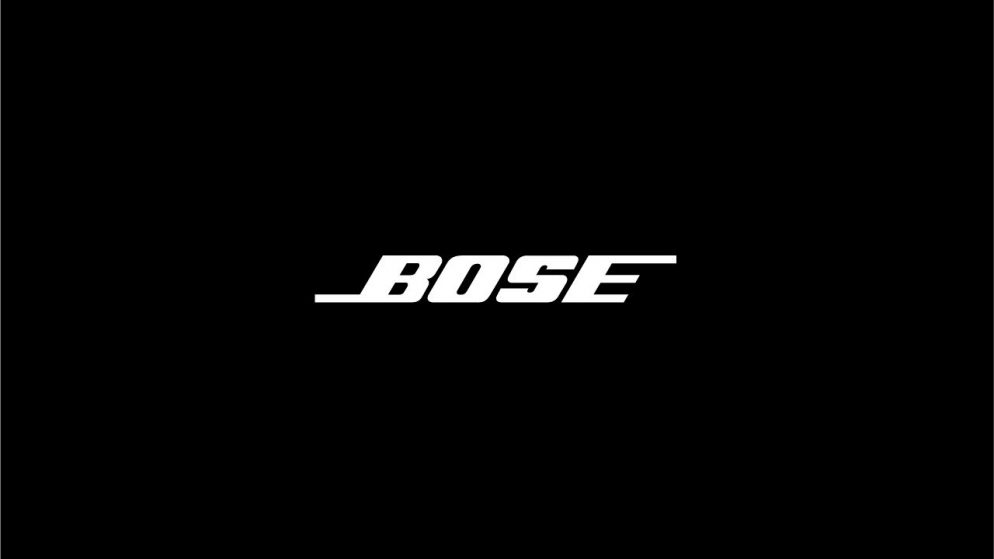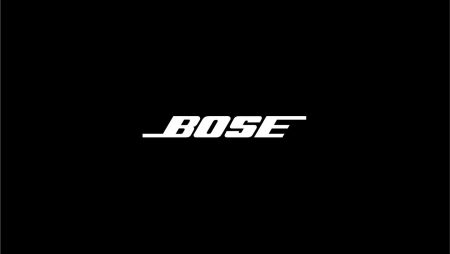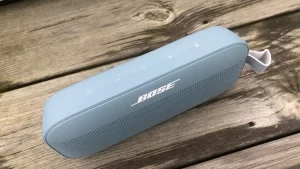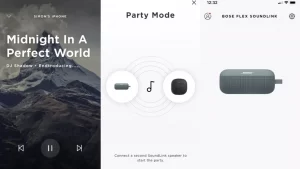

One-minute review
For a small, relatively affordable product, the portable Bluetooth speaker has an awful lot of boxes to tick before it can be deemed ‘competitive’. Happily, the Bose SoundLink Flex ticks plenty of them – some with a big, fat permanent marker.
Battery life? At twelve hours or so, it’s fine. Portability? The Flex is compact and light. Sound? The Bose has unlikely scale, equally unlikely bass presence and a very winning way with rhythms and tempos. Control? Take your pick – voice, app or onboard controls are all available.
So the Bose SoundLink Flex has plenty going for it, and that’s before you take the cachet and credibility of its brand logo into account. If it had a little more expressiveness to its low-end reproduction, or a little more discipline to its overall sound when you listen at significant volumes, it would be approaching ‘no-brainer’ status.

Bose Soundlink Flex price and release date
- Available now
- $149 / £149.95 / AU$199
- The Bose SoundLink Flex is on sale now, and it costs $149 / £149.95 / AU$199.
Of course, it’s not like Bose has the market to itself. The Sonos Roam (currently our pick for the best Bluetooth speaker) doesn’t cost much more than this, and there’s every chance you might have your head turned by very capable and similarly priced alternatives from brands like Ultimate Ears, Bang & Olufsen, or Sony. So the Flex is going to have to do a bit more than just show up looking and sounding half-decent.

Design and features
- 9 x 20 x 5cm and 600g
- IP67 rating for water and dust resistance
- Resilient materials and sturdy construction
First things first: the Bose SoundLink Flex, unlike quite a few nominal rivals, is an authentically portable Bluetooth speaker. Some brands seem to think being battery-powered and light enough to pick up makes a speaker ‘portable’, but Bose understands what’s required.
So the Flex is small enough (just 9 x 20 x 5cm), light enough (600g) and, crucially, robust enough to fit the bill. The chassis (available in black and ‘smoke’ white as well as the ‘stone’ blue of our review sample) is mostly of soft-touch silicone with quite a lot of ‘give’ in it, while the front grille is of powder-coated steel. There are little moulded feet to allow the Flex to lie on its back or stand upright in ‘landscape’ mode, while a durable fabric loop at one end means it can hang off a hook or carabiner. Thanks to accelerometers (or ‘PositionIQ’, as Bose would rather self-importantly have it), the Flex knows its orientation and will adjust its EQs accordingly.
An IP67 rating suggests the Bose will resist exposure to water and dust for far longer than any conscientious owner will allow, and by way of a little party piece the Flex is buoyant enough to float in water. Battery life of twelve hours or so (as long as you’re not listening at top volume, of course) adds to its ‘go-anywhere’ credentials, and should the worst happen the Flex can be brimming with power again after a couple of hours on the mains via its USB-C socket.

The SoundLink Flex is just as thoughtfully specified elsewhere. Bose isn’t exactly making with the details of amplification, or DAC, or driver configuration – but there are some things we know and others we’re prepared to speculate about. So sound is delivered by one full-range dynamic driver and bolstered by a couple of passive radiators. We’re not sure how much power is moving that driver, but we’re pretty sure it’s of the Class D variety.
Equally, the native resolution of the on-board DAC is a mystery, but what our testing has revealed is that it’s hi-res enough to deal with some TIDAL Masters files – but not the biggest and most hi-res of them. The Flex is happy to allow a 24bit/192kHz file on board, but it will be downscaled before you get to hear it. Wireless connectivity courtesy of Bluetooth 4.2 can’t be helping things here, either – although the Flex does at least pair rapidly and with seemingly unshakeable solidity. And it will pair with two devices at a time, which is useful.
As far as controlling the SoundLink Flex goes, well, you’ve plenty of options. There are a few physical controls along the top edge of the chassis (when the Bose is in the ‘landscape’ position) which cover ‘power on/off’, ‘volume up/down’ ‘Bluetooth pairing’, ‘play/pause’ and ‘skip forwards/backwards’. Voice control is available via Siri or Google Assistant, and there’s some (but not quite enough) operability available in the Bose Connect app.
In the established Bose manner this app is stable and clean, but in this implementation it goes without EQ adjustment – which is an oversight – but does at least offer the opportunity to create a stereo pair using the Flex and quite a range of other Bose speakers.

Audio performance
- Bold, assertive and punchy sound
- Can get slightly ragged at volume
- Impressive dynamics and rhythmic expression
Bose suggests the SoundLink Flex is capable of delivering ‘room-filling sound’ – but unless it’s an uncomfortably small room we’d suggest that’s not quite the case. But be in no doubt, given its dimensions and asking price, this Bose speaker is an upfront, confident and, yes, loud little speaker.
If it’s scale you’re after, you could do worse than give DJ Shadow’s Midnight in a Perfect World a listen. The Bose serves it up with ample low-frequency presence – bass is fuller-figured and more substantial than might be expected from a speaker of this size.
Those passive radiators obviously help a lot in this regard, but they also dictate a low-end sound that’s as short of fine detail as it is full-bodied. ‘Punch’ is an admirable trait in a portable Bluetooth speaker, ‘monotonal’ is not. In the great outdoors, though, assertive bass sounds are a definite bonus.
The Flex is similarly assertive at the opposite end of the frequency range. Treble sounds are substantial, but thankfully carry a fair bit more detail regarding timbre and texture than their counterparts down at the bottom. If you decide to crank the volume up the Bose’s top end can get quite spiky and abrasive, but back it off just a little and the treble sounds are disciplined and believable. There’s plenty of bite and crunch here at any volume level – so if things get out of hand you know what to do.

The Bose handles the loping rhythm well, too – not every affordable portable speaker can give proper expression to rhythms and tempos, but the Flex proves quite sinuous where any number of rivals tends to stomp a bit mindlessly. But for all its virtues, this is not the recording with which to test midrange fidelity – and so a switch to Meek Mill’s Flexing is in order.
The Bose SoundLink Flex proves distinct and detailed enough through the midrange to make all of the rapper’s objectionable, self-aggrandising misogyny absolutely plain – so you’re never in any doubt as to his motivations or level of self-esteem. This is a level of articulacy that’s by no means common in products of this type and price.
Integration of the frequency range is smooth (as it should be, given it’s almost entirely delivered by a single driver), and the Bose demonstrates more than enough dynamism to make big volume-switches or changes of sonic emphasis plain. In fact, all it needs to become an authentic front-runner is a little more decorum at high volumes and a little more eloquence where the lowest frequencies are concerned.
Should I buy the Bose Soundlink Flex?

Buy it if…
You need a genuinely portable speaker
Treat it with just a modicum of respect and the SoundLink Flex will stand up to most things.
You like a big sound
‘Room-filling’? Not really. ‘Bigger than seems likely’? Most definitely.
You enjoy being in control
With app, voice and physical control all available, you should be able to get your own was quite easily.
Don’t buy it if…
You like to tailor your audio
There’s no EQ adjustment here, so you get what you’re given.
You like a big sound
The Bose will go loud, certainly, but it’s at the cost of a little sonic composure.
You’re all about that bass
‘Ample’ is a good way to describe the Flex’s bass response. So is ‘short of detail’.



